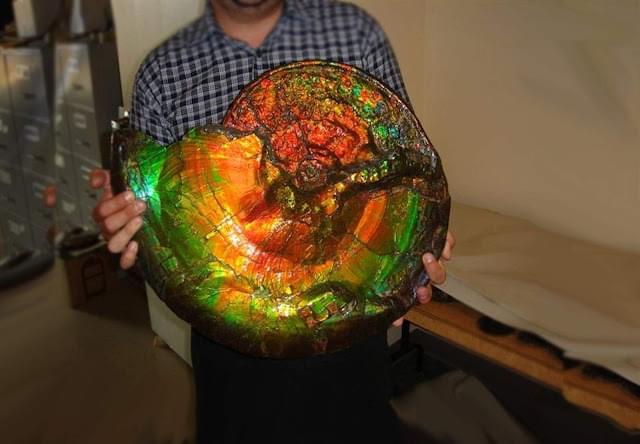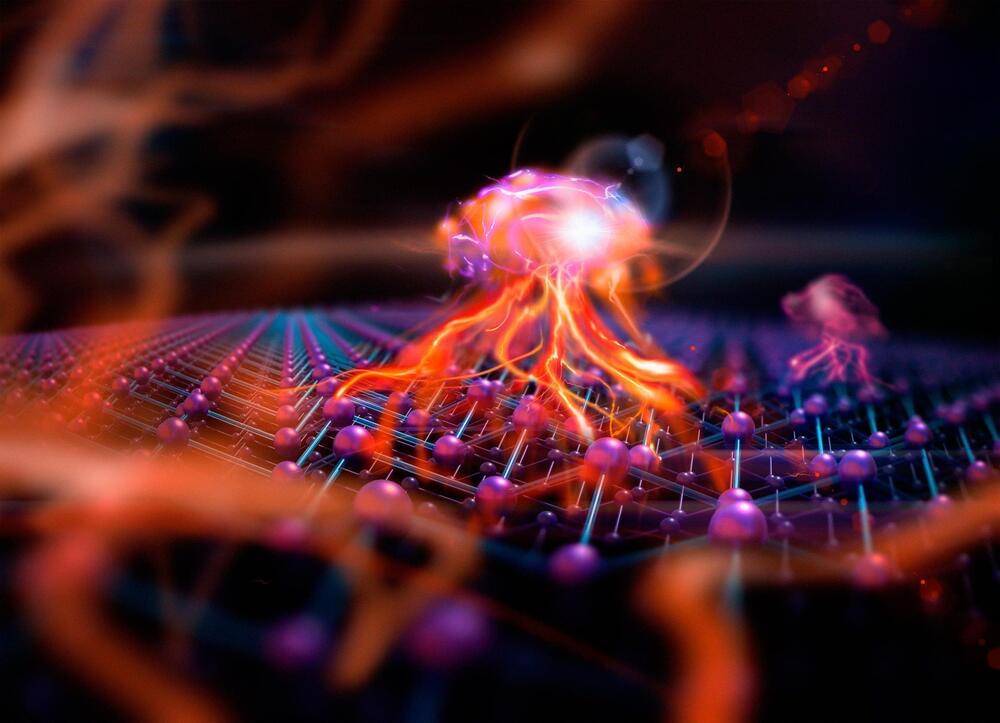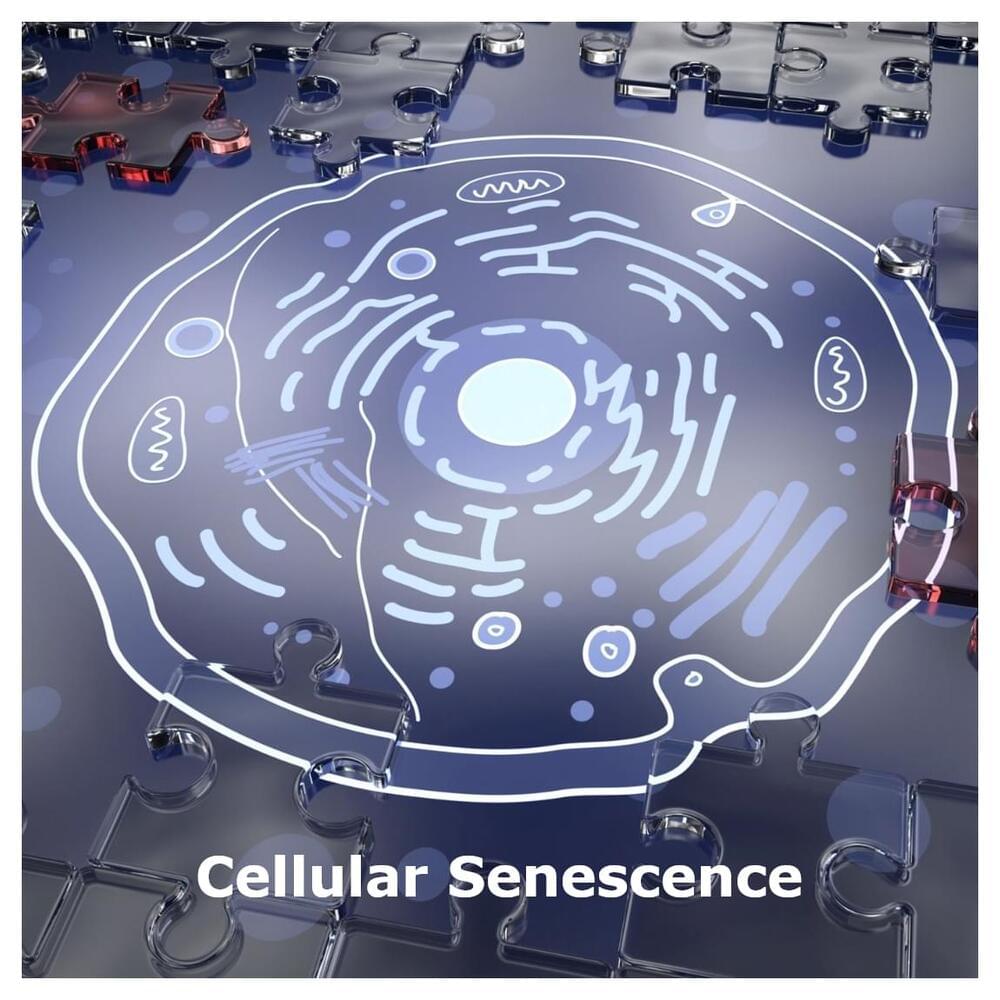
Ammolite is an opal-like organic gemstone found primarily along the eastern slopes of the Rocky Mountains of North America. It is made of the fossilized shells of ammonites, which in turn are composed primarily of aragonite, the same mineral contained in nacre, with a microstructure inherited from the shell. It is one of few biogenic gemstones; others include amber and pearl.
The chemical composition of ammolite is variable, and aside from aragonite may include calcite, silica, pyrite, or other minerals. The shell itself may contain a number of trace elements, including: aluminium; barium; chromium; copper; iron; magnesium; manganese; strontium; titanium; and vanadium. Its crystallography is orthorhombic. Its hardness is 4.5–5.5, and its specific gravity is 2.60–2.85.
An iridescent opal-like play of color is shown in fine specimens, mostly in shades of green and red; all the spectral colors are possible, however. The iridescence is due to the microstructure of the aragonite: unlike most other gems, whose colors come from light absorption, the iridescent color of ammolite comes from interference with the light that rebounds from stacked layers of thin platelets that make up the aragonite.


















